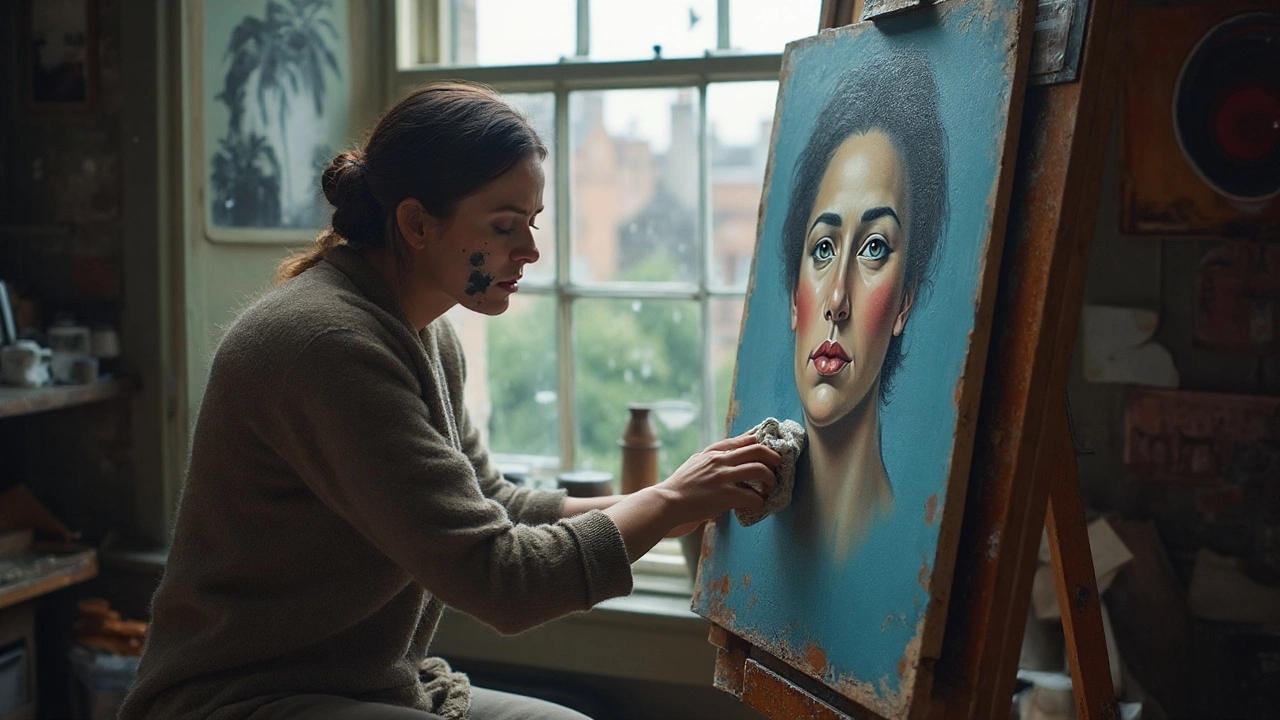Glazing and Scumbling: What They Are and How to Use Them
If you’ve ever seen a painting with a luminous glow or a gritty, misty look, chances are the artist used glazing or scumbling. Both are layer‑based tricks that let you change color, light, and texture without starting over. The good news? You don’t need a master’s degree to get decent results – just a few supplies and a bit of practice.
Glazing: Transparent Color Overlays
Glazing means applying a thin, see‑through wash of paint over a dry underpainting. Think of it like a colored filter on a photograph. The key is to keep the mixture glossy and fluid. Use a medium such as linseed oil, a glazing medium, or even a modern acrylic glazing fluid mixed with a small amount of pigment. Test the consistency on a scrap: it should spread easily and stay glossy, not matte.
Why glaze? It lets you build depth and a rich glow that single‑layer paint can’t achieve. For example, a warm orange glaze over a cool blue underpainting can create a vibrant sunset feel without repainting the whole sky. Start with a fully dry base, then apply the glaze with a soft brush, working in smooth, overlapping strokes. Let each layer dry completely before adding the next – usually a few hours for oils, minutes for acrylics.
Scumbling: Opaque, Dry‑Brush Texture
Scumbling is the opposite of glazing. Here you use a thick, semi‑opaque paint and drag it over a dry surface to let the underpainting peek through. The result is a broken, almost dusty texture that can suggest light, mist, or rough material. Use a dry brush loaded with paint, then lightly sweep it across the canvas. Less pressure = more of the underpainting showing; more pressure = a heavier, more opaque effect.
Scumbling works great for atmospheric effects like fog, sunlight hitting a surface, or the grain of an old wooden table. Because you’re applying paint over a dry layer, you can quickly adjust the intensity. If the effect looks too strong, simply wipe a little with a clean rag or add a light glaze on top to soften it.
Both techniques rely on good underpainting. Spend time getting your base colors and shapes right before you start glazing or scumbling. A weak foundation will show through and look messy.
Quick tip: Keep a small palette of neutral greys and earth tones for scumbling. They blend easily with most colors and help you create natural shadows and highlights without introducing new hues.
Common mistakes to avoid:
- Applying glaze before the underpainting is dry – the colors will mix unintentionally.
- Using too much medium, which makes the glaze runny and loses color intensity.
- Pressing too hard while scumbling, which turns the effect into a solid layer rather than a broken texture.
- Skipping test swatches – a quick scrap can save hours of rework.
Practice both methods on a small sketch before moving to a full canvas. Once you get the feel for brush pressure, paint consistency, and drying times, you’ll see how these simple tricks can transform a flat painting into something that feels alive.
Ready to try? Grab a thin brush, mix a tiny amount of pigment with your glazing medium, and start with a single transparent layer over a dry sky. Then, pick up a dry bristle brush, dip it in a muted earth tone, and lightly scumble across a distant hill. You’ll notice the depth popping instantly.
Glazing and scumbling are just two tools in a painter’s toolbox, but they can make a huge difference. Use them wisely, watch how the light changes, and watch your artwork grow richer with each layer.

10 Sep 2025
Smudged a face or picked the wrong color? Learn safe, proven ways to fix wet, tacky, and dry oil paint, from wiping-out to glazing, scraping, and repainting.
Continue reading...
